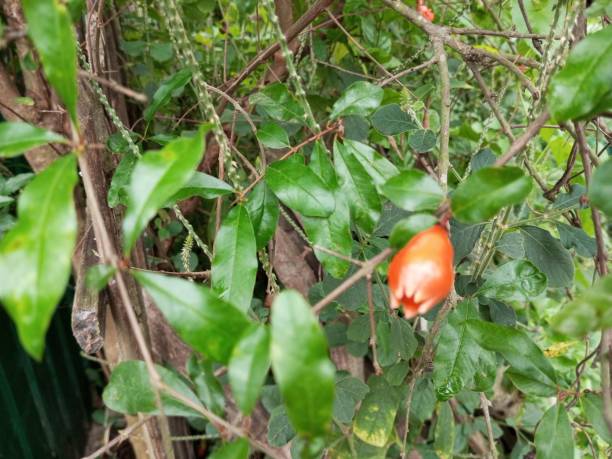Introduction
Landscaping with red-berried trees offers an enchanting and vibrant addition to any garden or outdoor space. These trees not only provide aesthetic appeal but also contribute to the overall ecosystem by attracting wildlife. In this comprehensive guide, we will delve into various aspects of red-berried trees, including popular species, cultivation techniques, seasonal care, and creative landscaping ideas.
Winterberry (Ilex verticillata)
Winterberry, a deciduous holly native to North America, is renowned for its bright red berries that persist throughout the winter. Its attractive clusters of berries make it a standout choice for winter landscapes. Understanding its characteristics, growing conditions, and landscape uses is essential for successful cultivation.
Cotoneaster (Cotoneaster spp.)
Cotoneaster, a diverse genus comprising many species and varieties, offers an array of red-berried options. Ranging from ground covers to small trees, cotoneasters are adaptable and bring unique features to garden designs. Exploring the various varieties, planting guidelines, and design considerations can help in choosing the right cotoneaster for your landscape.
Mountain Ash (Sorbus aucuparia)
The mountain ash tree, known for its clusters of vibrant red berries, is a deciduous tree that adds ornamental and ecological value to gardens. Understanding the features, varieties, and benefits of mountain ash, along with proper care, enhances its role in the landscape.
Holly (Ilex spp.)
Holly trees, with their glossy green foliage and bright red berries, are classic choices for both traditional and contemporary landscapes. Diverse holly species offer various sizes and shapes, making them versatile for different garden styles. Exploring other holly species, soil and watering tips, and holiday decor ideas can elevate the presence of hollies in your garden.
Site Selection
Sunlight and Shade Requirements: Red-berried trees typically thrive in full to partial sunlight. Understanding the specific sunlight needs of the chosen tree is crucial for optimal growth and berry production.
Soil Quality and pH Levels: Well-draining soil with the right pH is essential. Conducting a soil test and amending the soil accordingly ensures a conducive environment for root development and nutrient uptake.
Drainage Considerations: Proper drainage prevents waterlogging, which can be detrimental to the roots of red-berried trees. Incorporating organic matter and ensuring adequate drainage contribute to a healthy root system.
Planting Techniques
Proper Planting Depth: Planting red-berried trees at the correct depth is vital for their establishment. Planting too deep or too shallow can hinder root development and overall growth.
Mulching for Moisture Retention: Mulching conserves soil moisture, regulates temperature, and suppresses weeds. Using organic mulch around the base of red-berried trees promotes a healthy growing environment.
Pruning Strategies: Pruning helps shape the tree, encourage airflow, and remove dead or diseased branches. Understanding the specific pruning requirements of each red-berried tree ensures proper maintenance and optimal berry production.
Watering and Fertilization
Adequate Watering Practices: Red-berried trees require consistent moisture, especially during dry periods. Deep watering encourages deep root growth, enhancing the tree’s overall resilience.
Fertilizing Red-Berried Trees: Applying a balanced fertilizer in spring supports healthy growth and berry production. Understanding the nutrient requirements of red-berried trees helps in choosing the right fertilizer and application rates.
Seasonal Considerations: Adjusting watering and fertilization practices based on the seasons ensures that red-berried trees receive the necessary nutrients for each growth stage.
Pest and Disease Management
Common Pests and How to Combat Them: Red-berried trees may face challenges from pests such as aphids, scale insects, and spider mites. Identifying and implementing appropriate pest control measures helps in preventing infestations.
Disease Prevention Measures: Fungal diseases, such as powdery mildew and leaf spot, can affect red-berried trees. Practices like proper spacing, adequate ventilation, and timely pruning contribute to disease prevention.
Organic Pest Control Options: Embracing organic pest control methods, such as introducing beneficial insects or using neem oil, provides effective alternatives to chemical pesticides.
Creating a Focal Point
Strategic Placement: Placing red-berried trees in strategic locations enhances their visual impact. Consider their growth habit, mature size, and surrounding elements when deciding on placement.
Complementing Surrounding Elements: Red berries create a striking contrast against green foliage or snowy landscapes. Choosing companion plants that complement the color scheme enhances the overall aesthetic appeal.
Designing with Colors in Mind: Red-berried trees can be used to create color-themed gardens. Combining them with plants featuring complementary colors or contrasting textures elevates the overall design.
Attracting Wildlife
Bird-Friendly Landscaping: Red-berried trees are a magnet for birds, especially during the winter months when food sources may be scarce. Designing with bird-friendly features, such as bird feeders and water sources, creates a welcoming habitat.
Providing Shelter and Nesting Spaces: Incorporating evergreen red-berried trees offers year-round shelter for birds. Nesting boxes or platforms placed strategically enhance the habitat for nesting birds.
Ecological Benefits: Beyond aesthetics, red-berried trees contribute to the ecosystem by providing food for birds and supporting biodiversity. Understanding and appreciating the environmental role of these trees adds depth to their value in the landscape.
Seasonal Interest
Year-Round Appeal: Red-berried trees can contribute to the garden’s visual interest throughout the year. Combining them with plants that offer different seasonal features ensures a dynamic and ever-changing landscape.
Seasonal Blooms and Foliage Changes: Pairing red-berried trees with plants that have varying bloom times and foliage colors extends the visual interest across different seasons.
Winter Garden Design: Red-berried trees shine in winter landscapes. Consider their placement to maximize visibility from indoor spaces, adding warmth and color during the colder months.
Container Gardening
Choosing Appropriate Containers: Selecting the right containers is crucial for successful container gardening with red-berried trees. Ensure containers have drainage holes, and choose a potting mix suitable for the specific tree.
Care Tips for Potted Red-Berried Trees: Container-grown red-berried trees require regular watering, fertilization, and occasional root pruning. Monitoring their growth and adjusting care practices accordingly ensures healthy development.
Versatility in Design: Container gardening allows flexibility in placing red-berried trees on patios, balconies, or small gardens. Experimenting with different container sizes and arrangements adds versatility to the overall garden design.


